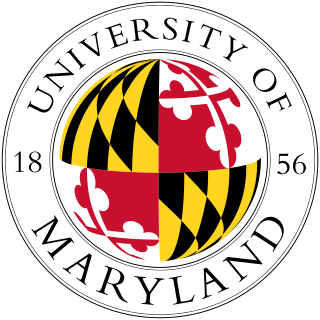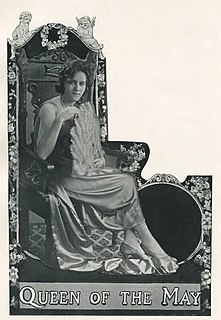
Capital One Field at Maryland Stadium is an outdoor athletic stadium on the campus of the University of Maryland in College Park, Maryland. It is the home of the Maryland Terrapins football and men's lacrosse teams, which compete in the Big Ten Conference. The facility was formerly named Byrd Stadium after Harry "Curley" Byrd, a multi-sport athlete, football coach, and university president in the first half of the 20th century. In August 2006, naming rights were sold to Chevy Chase Bank, which was subsequently acquired by Capital One. On December 11, 2015, the Byrd Stadium name was removed, with the stadium being renamed Maryland Stadium.

Emmons Burdette Dunbar was an American agriculturalist and college football coach. He served as head coach at the Maryland Agricultural College—now known as the University of Maryland, College Park—in 1901.

Francis Henry Peters was an American college football coach. He served as head coach for the Maryland Agricultural College in 1900.

Samuel Stephen Cooke Sr. was an American college football coach. He served as head coach for the football team at the Maryland Agricultural College in 1899.

Grenville Lewis, Jr. was an American engineer, cattle rancher, and college football coach. He served as the head coach at the Maryland Agricultural College.
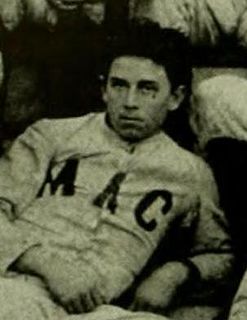
Samuel Herbert "Pop" Harding was an American college football player and coach. He served as head coach at the Maryland Agricultural College in 1893 and led the team to a perfect 6–0 record and its first winning season.
William T. Elias was an American football coach. He served as the head coach at George Washington University, the University of Virginia, and the United States Naval Academy. Elias compiled a career college football record of 36–48–5.
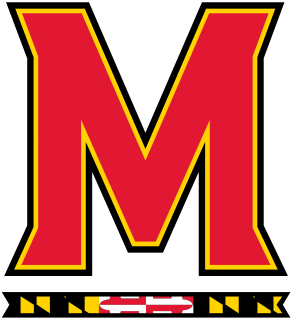
The Jimmy Crab Bowl Classic is the name given to the Maryland–Navy football rivalry. It is an American college football rivalry between the Maryland Terrapins football team of the University of Maryland and the Navy Midshipmen football team of the United States Naval Academy. The two institutions, located in close proximity in the state of Maryland, first met for a football game in 1905. Since then, the series has often been marked by controversy, with incidents by players and supporters occurring both on and off the field. The winner of the game is awarded the Crab Bowl Trophy.

The modern Maryland Terrapins football program representing the University of Maryland traces its lineage to the team first formed at what was then the Maryland Agricultural College (MAC) in 1892. In the initial years, due to the rudimentary state of intercollegiate athletics and interstate travel, all games were played against local colleges, high schools, and athletic clubs.

Robert Troxell "Ray" Knode was an American Major League Baseball baseball and college football player. He played for four seasons as a first baseman with the Cleveland Indians from 1923 to 1926.
The Maryland Intercollegiate Football Association (MIFA), also called the Maryland Intercollegiate League, was an early college football conference with a membership composed of schools located primarily in the state of Maryland. One exception to that was Gallaudet, which is located in Washington, D.C. All of the members were universities, with the exception of Baltimore City College, a preparatory school located in Baltimore, Maryland.

Ritchie Coliseum is a multipurpose athletics facility and music venue at the University of Maryland. It served as the home arena for the Maryland Terrapins men's basketball team from 1931 to 1955, and for its gymnastics, wrestling, and volleyball teams until 2002. It is located on the east side of Baltimore Avenue in College Park, Maryland. The official seating capacity is 1,500.

The 1892 Maryland Aggies football team represented the Maryland Agricultural College in the 1892 college football season. It was the first football team to officially represent the school. Maryland played three games, all of which it lost, and failed to score any points. Halfback Pearse "Shorty" Prough gained the only positive yardage for the team against Episcopal High School. He netted 35 yards from scrimmage after first running 30 yards in the wrong direction. It remained the only winless Maryland team until matched by the 1967 squad coached by Bob Ward.
The 1893 Maryland Aggies football team represented the Maryland Agricultural College in the 1893 college football season. After losing all three of its games the previous season without scoring a point, Maryland showed considerable improvement in 1893. The Aggies defeated all six opponents and were named the District of Columbia and Maryland state champions.
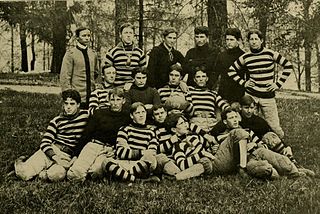
The 1897 Maryland Aggies football team represented the Maryland Agricultural College in the 1897 college football season. The team was led by second-year head coach Grenville Lewis.
The 1894 Maryland Aggies football team represented the Maryland Agricultural College in the 1894 college football season. Maryland participated as a member of the Maryland Intercollegiate Football Association, which was formed as a result of a disagreement the previous season over whether Maryland or St. John's College deserved the state championship. The Aggies finished the season with a 4–3 record.

Raymond J. "Ray" Poppelman was an American Marine and athlete. He attended the University of Maryland, where he played on the football and lacrosse teams. Poppelman was inducted into the University of Maryland Athletic Hall of Fame in 1988.

